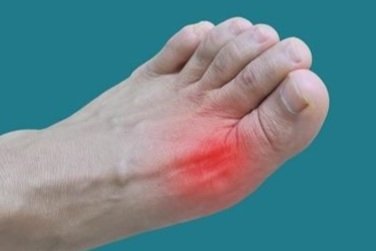Ingrown toenails can be a source of discomfort and frustration for many individuals. This common foot condition occurs when the edge of a toenail grows into the surrounding skin. Understanding the symptoms can help you address the issue early and seek guidance if needed.
What Are Ingrown Toenails?
Ingrown Toenails happen when the corner or side of a toenail curves into the skin, instead of growing straight out. Most often affecting the big toe, this condition can lead to redness, swelling, and tenderness. Factors like improper nail trimming, tight footwear, or repetitive pressure on the toes typically cause ingrown toenails. While they may seem mild initially, they may worsen without proper care and attention.
What Are Five Symptoms of Ingrown Toenails?
If you’ve been noticing discomfort in your toes, these symptoms might indicate the presence of an ingrown toenail.
1. Redness Around the Toenail
One of the initial signs is redness around the affected toenail. This redness results from irritation caused by the nail pressing into the skin. It’s often accompanied by mild discomfort.
2. Swelling Near the Nail
Swelling is another common symptom. When the toenail digs into the surrounding tissue, it can trigger inflammation, leading to visible puffiness.
3. Pain or Tenderness
Pain or tenderness is a key signal that something may be wrong. You might notice discomfort when wearing shoes, walking, or pressing on the affected area.
4. Warmth or Sensitivity to Touch
An ingrown toenail can make the surrounding skin feel warm or tender to the touch. These sensations are typically a response to localized irritation.
5. Fluid or Drainage
If left unaddressed, an ingrown toenail might lead to an infection, which could result in fluid or pus draining from the area. This is often accompanied by severe redness and increased discomfort.
What to Do for Care
If you believe you have an ingrown toenail, there are several helpful approaches to address the issue at home. Start by soaking your foot in warm, soapy water three times daily to reduce swelling and soften the skin. After soaking, you can gently lift the corner of the nail, using clean cotton or dental floss to create space between the nail and skin. Be cautious and avoid forcing the nail, which could worsen the condition.
Avoid tight-fitting shoes and opt for breathable footwear that gives your toes space to move. Trim your toenails straight across, leaving the corners slightly longer to prevent the nail from curving inward. Do not cut your nails too short, as this can increase the likelihood of future problems.
If the pain worsens, signs of infection appear, or home care isn’t working, consulting with a podiatrist is a helpful step. A foot specialist provides professional care and discusses treatment options to relieve discomfort.
Moving Forward with Foot Health
Addressing an ingrown toenail can be straightforward when caught early. By recognizing the symptoms, you can take prompt action to care for your feet and maintain their health. A podiatrist provides expert guidance and tailored care if you’re dealing with persistent discomfort or recurring issues. Whether it’s a mild irritation or something more serious, taking steps toward proper foot care can keep you moving comfortably. Contact a podiatrist today for personalized advice and support.
- What Is Medicaid Exclusion For Funeral Plans – Benefits of Medicaid Funeral Exclusions!
- Banner Desert Medical Center – Trusted Care in Arizona!
- Why Cranberry Femine Health – The Ultimate Natural Wellness Guide for Women!
- What Is The Best Peptide For Bone Health – A Comprehensive Overview!
- Why Is Signify Health Calling Me – Understanding the Purpose Behind the Call!

Leave a Reply